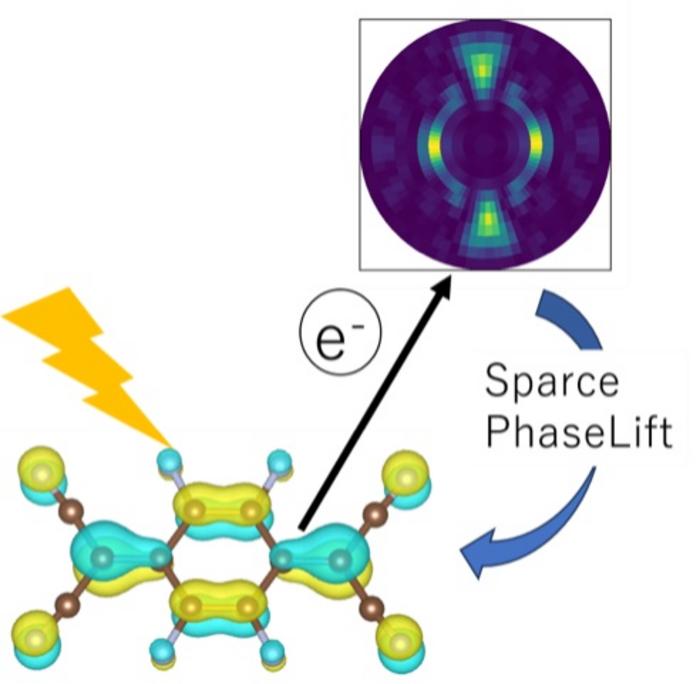Discoveries and progress in materials science often lay the foundation for technological breakthroughs that reshape many industrial and commercial fields, including medicine, consumer electronics, and energy generation, to name a few. Yet, the development of experimental techniques crucially underpins the exploration of new materials, paving the way for groundbreaking discoveries. These techniques allow scientists to delve into a material’s chemical and physical properties, unlocking insights essential for realizing their potential applications.

Credit: Kaori Niki from Chiba University, Japan
Discoveries and progress in materials science often lay the foundation for technological breakthroughs that reshape many industrial and commercial fields, including medicine, consumer electronics, and energy generation, to name a few. Yet, the development of experimental techniques crucially underpins the exploration of new materials, paving the way for groundbreaking discoveries. These techniques allow scientists to delve into a material’s chemical and physical properties, unlocking insights essential for realizing their potential applications.
In a recent study published in the Journal of Physical Chemistry A, a research team led by Associate Professor Kaori Niki from Chiba University, Japan, reported a new methodology to experimentally visualize molecular orbitals (MOs)—the distribution and state of electrons in a given molecule. Their latest paper, which was submitted on September 29, 2023, and published online on March 26, 2023, was co-authored by Ms. Rena Asano and Prof. Manabu Hagiwara from Chiba University, Prof. Yoichi Yamada from the University of Tsukuba, and Prof. Kazushi Mimura from Hiroshima City University.
The proposed method is centered around photoemission orbital tomography (POT). This technique consists of measuring the distribution and momentum of electrons released all around a material after absorbing energy from incoming light. By mapping these variables, one can then theoretically work out the MOs of the material. Despite being promising, traditional POT faces several challenges that greatly limit its applicability. First, multiple rounds of POT measurements are needed to probe the material at different photon energies and reconstruct three-dimensional MOs. This takes time and requires complex experimental protocols. Second, to properly account for differences in molecular orientation and deformations in a given material, it’s necessary to combine POT with other analytical techniques, which is quite expensive and tedious. Third, traditional POT techniques are sensitive to noise in the measured data, which makes it difficult to observe small MOs.
To address all these limitations, Prof. Niki’s team developed a novel POT technique based on a mathematical analysis tool called the PhaseLift algorithm. This algorithm is designed to address a fundamental problem in signal and image processing: reconstructing a signal or image from incomplete or indirect measurements. Using PhaseLift, the researchers simplified the photoelectron momentum maps (PMMs) obtained through POT into a more manageable form, which in turn enabled them to more easily and accurately calculate the desired MOs.
One of the key advantages of the proposed approach is that precise MOs can be obtained from a single set of PMM measurements. Moreover, it is much better at handling noisy data. This is, in part, thanks to the clever use of sparsity-based techniques, which limits the space where solutions to MOs are considered to be only the most relevant molecular orbitals. Both theoretical analyses, as well as experimental tests, confirmed the validity of this innovative method, showcasing its potential. “This research was a collaboration between mathematicians, information theorists, and physical scientists and specifically included both experimentalists and theorists,” explains Prof. Niki. She further added, “Leveraging their expertise, we have achieved successful cross-disciplinary fusion research. This collaborative approach has enabled us to overcome previous challenges and deliver a POT method that holds promise for broader accessibility and applicability.”
Using the proposed technique, scientists will be able to visualize the electronic states of molecules in thin film materials more easily. In turn, this will help better understand the origin of any relevant physical properties, leading to new smart material designs and further innovations in applied science. “Our developed method represents a breakthrough in the visualization of the electronic states of materials that were previously challenging to observe,” comments Prof. Niki.
Recognizing the immense potential that PhaesLift-based POT offers, Prof. Niki and the team hope to become pioneers in this emerging research field. “In anticipation of the global spread of PMM, I hope that we can establish a center specializing in PMM analysis ahead of the rest of the world,” she remarks, “This core institute will hopefully become a hub of innovation, driving the development of numerous new materials that will support the Japanese economy for the next half-century.”
Let us wish them the best of luck in their future endeavors, and may their new experimental techniques bring about exciting technological advances!
About Associate Professor Kaori Niki
Prof. Kaori Niki obtained her PhD in Engineering from the University of Tokyo in 2008. She joined Chiba University in 2012, where she currently serves as Associate Professor. She specializes in nanotechnology and nanomaterials, with a particular focus on organic thin films, photoelectron spectroscopy, magnetic materials, artificial intelligence, and surface science. She has published over 20 peer-reviewed papers on these topics. She is also a member of the Japan XAFS Society, The Physical Society of Japan, and the Japan Society for Vacuum Surface Science.
Journal
The Journal of Physical Chemistry A
Method of Research
Experimental study
Subject of Research
Not applicable
Article Title
Photoemission Orbital Tomography Using a Robust Sparse PhaseLift
Article Publication Date
26-Mar-2024
COI Statement
The authors declare no competing financial interest.



